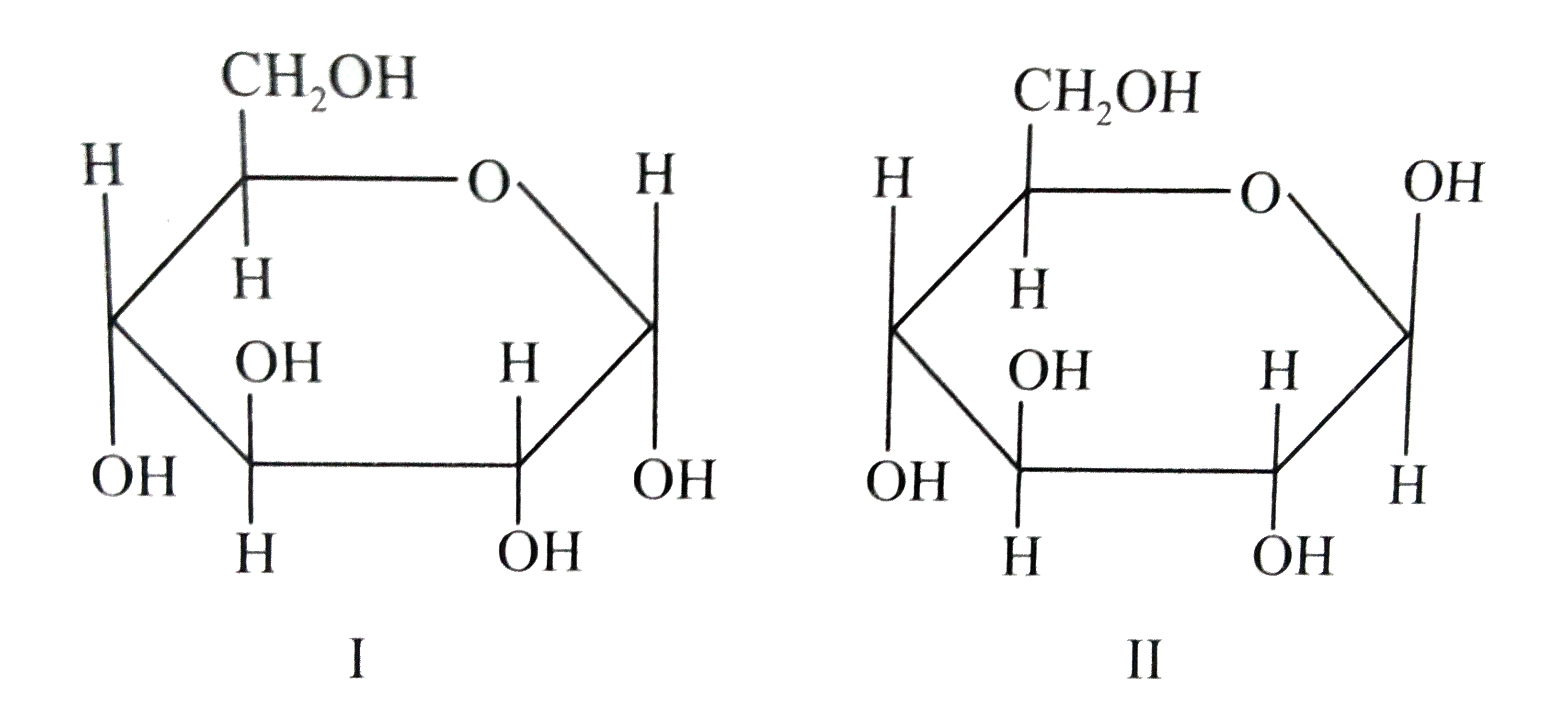α−D− Glucopyranose and β−D− glucopyranose are
diastereomers
epimers
anomers
all of these
The correct Answer is:D
α−D−(+)− glucopyranose and β−D−(+)− glucopyranose, the two cyclic forms of naturally occurring D−(+)− glucose, are diastereomers as they are not mirror images of each other. These diastereomers differ only in the configuration of C1. In carbohydrate chemistry diastereomers of this types are called anomers, and the hemiacctal carbon atom is called the anomeric carbon atom.
When we draw the cyclic forms of a D sugar in the Haworth formula, the α anomer has the −OH trans to the −CH2OH group while the β anomer has the −OH cis to the −CH2OH, group, X-ray analysis has shown that the actual conformations or the rings are the chair forms. In the β,anomer of D− glucose, all of the large substituents, −OH and −CH2OH, are equatorial, In the α- anomer, the only bulky axial substituent is the −OH at C1.
Note that β−D- glucopyranose is the most abundant naturally occuring aldohexose because all ring. substituents in the chair conformation are equatorial.
Diastereomers with more then one sterecocenter that differ in the configuration about only one stercocenter are called epimers. α−D−(+)− glucopyranose and β−D−(+)− glucopyranose are epimers because their configuration about C1 and differs. Similarly D- threose and D- erythrose are epimers because their configuration about C2 differs.
Topper's Solved these Questions
- BIOMOLECULESBook:R SHARMAChapter:BIOMOLECULESExercise:Follow_up_ Test 5
Explore 6 Videos
- BIOMOLECULESBook:R SHARMAChapter:BIOMOLECULESExercise:Follow_up_ Test 6
Explore 6 Videos
- BIOMOLECULESBook:R SHARMAChapter:BIOMOLECULESExercise:Follow-up Test 3
Explore 15 Videos
- AMINESBook:R SHARMAChapter:AMINESExercise:Archives
Explore 36 Videos
- CHEMICAL KINETICSBook:R SHARMAChapter:CHEMICAL KINETICSExercise:Archives
Explore 39 Videos
Similar Questions
Knowledge Check
α-D-Glucopyanose and β-D-Glucopyranose are:
AstereoisomersBdiastreoisemerCenantiomersDanomersβ−D−(+) Glucopyranose is
ACylic structure of glucoseBIt is dextrorotatory because 'D' is placed before name of itCit is anomer of α−D−(+) GlucosepyranoseDPyranose naming is due to it's anlogy with pyraneα−D(+) glucopyranose is.
AacetalBketalChemiacetalDhemiketol
How many reducing saccharides are there in following list ?
(a) α-D-mehtylglucopyranose
(b) β-D-glucopyrancose
(c )Cellulose
(d) maltose
(e ) Sucrose
(f ) D-fructose
(g) Starch
(h) α-D-fructofuranose
View SolutionFind out of compounds which show mutarotation
(A) Cellobiose
(4−O−(β−D−glucopyranosyl)−D−glucophranose)
(B) Maltose
(4−O−(α−D−glucopyranosyl)−D−glucopyranose)
(C) Lactose
(4−O−(β−D−galactopyranosyl)−D−glucopyranose)
(D) Gentiobiose
(6−O−(β−D−glucopyranosyl)−D−glucopyranose)
(E) Sucrose
(α−D−glucopyranosyl−β−D−fructofuranoside)
(F) Methyl α−D−galactopyranoside.
(G) α−D− allopyranose
(G) α−D− glucopyranose
(I) α−D− fructofuranose
View SolutionWhich of the following is formed by α−D glucopyranose unit and β−D fructofuranoside unit?
View Solutionα-D glucose and β-D glucose are :-
View Solutionα−D−(+) glucose and β−D−(+) glucose are
View Solution


